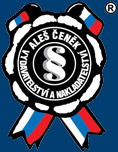Zařazeno v kategoriích: ANTIKVARIÁT
English in medicine a course in communication Skills
Eric Glendinning, Beverly Holmström
Dostupnost
skladem
Vydavatel
Počet stran
153
Místo vydání
Londýn
Rok vydání
1993
Formát
24x18 cm
ISBN
0521311659
EAN
FPR2192
English in Medicine is a course for doctors, medical students and other health professionals who need to communicate with patients and colleagues. Each of the seven units focuses on one area of practitioner-patient communication, from history-taking and examination to diagnosis and treatment. The course develops all four skills through a wide variety of activities. Table of contents: * Taking a history (Asking basic questions. Taking notes. Reading skills: Scanning a case history. Case history: William Hudson. Asking about systems. Asking about symptoms. Reading skills: Noting information from a textbook) * Examining a patient (Giving instructions. Understanding forms. Reading skills: Using a pharmacology reference. Case history) * Special examinations (Instructing, explaining and reassuring. Rephrasing, encouraging and prompting. Reading skills: Reading an article. Case history) * Investigations (Explaining and discussing investigations. Using medical documents. Reading skills: Reading articles. Case history) * Making a diagnosis (Discussing a diagnosis. Explaining a diagnosis. Reading skills: Reading articles. Case history) * Treatment (Medical treatment. Physiotherapy. Surgical treatment. Reading skills: Using an online database) * Tapescript * Appendix 1: Language functions * Appendix 2: Common medical abbreviations * Appendix 3: Job titles in the hospital system * Appendix 4: A broad equivalence of positions in the NHS and US hospital systems * Supplementary activities.
Ostatní s tímto titulem kupují:
-
Položka byla přidána do košíku.
























